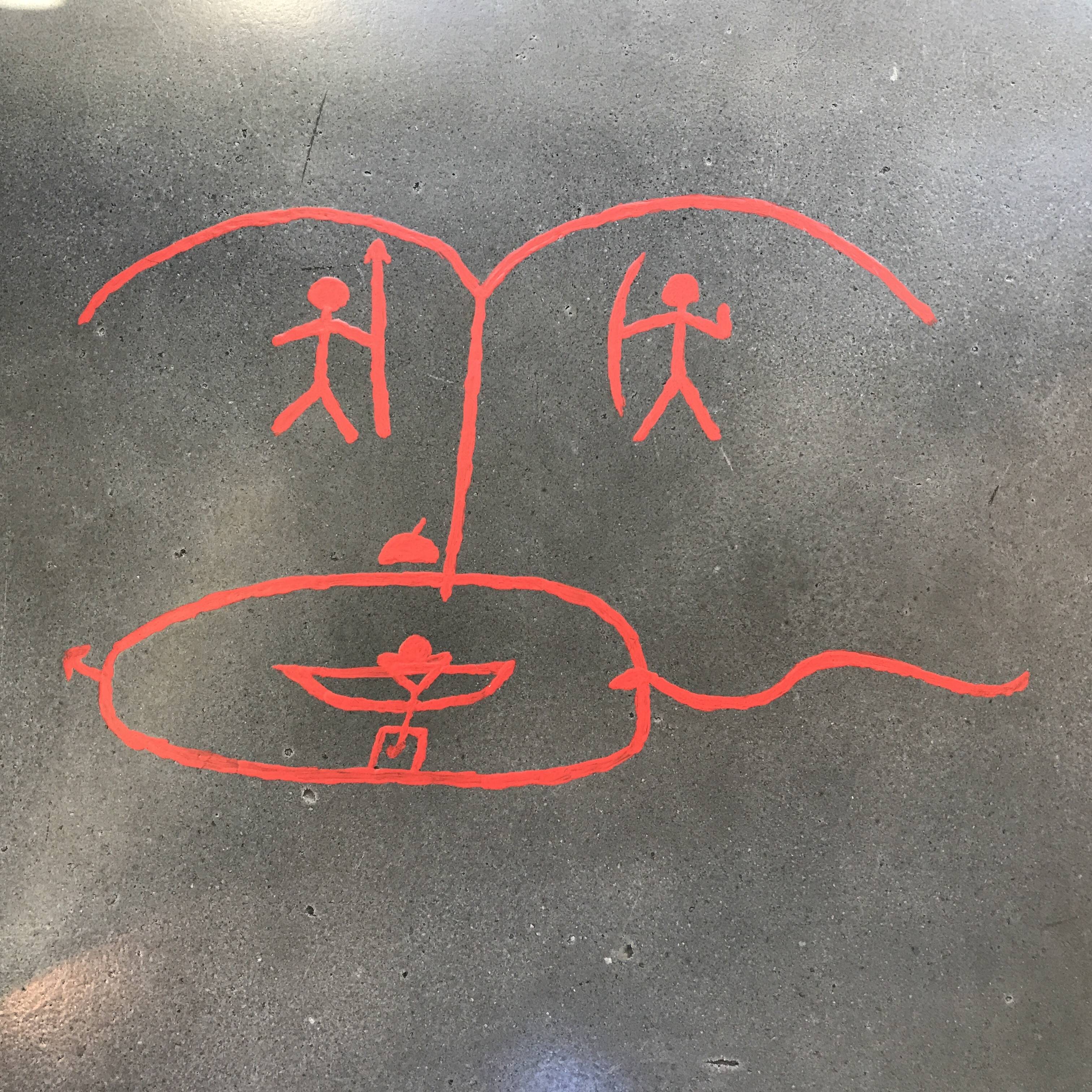
13 Jul Pictograph, Lil’wat Landscape
This drawing (above) of the Lil’wat Landscape can be found on the floor at the SLCC and was painted by Lil’wat Nations Cultural Technician, Johnny Yaqalatqa7 ‘Weather Changer’ Jones. It is a replica of an actual pictograph painted by Lil’wat Nation Medicine Man, John Sky and was discovered in 1909 by James Teit.
Top Left: is Tsíqten (war or fish spear), today it’s known as Blackcomb Mountain.
Top Right: is Npegw’q (ground-hog) or Skwitsu (rich in gathering berries and hunting), today it’s known as Whistler Mountain, Kaxwitima
The dividing line is Fitszimmons Creek; it runs down to Green Lake past the Lil’wat Nation Wolf Clan pithouse.
Bottom Right: At the south end of Green Lake is the River of Golden Dreams. The river was used by the Sunulhkaz – Lil’wat (double-headed serpent) a water monster to move between Alta and Green Lake.
Bottom Left: A boy from the L̓il̓wat nation was fishing at Green Lake. He hooked something heavy and after pulling it up discovered that it was a piece of copper. His Grandmother told him that it was very special to wrap it up and put it away, soon after the boy could catch many fish and deer. After returning from a successful hunt, carrying his food and pelts the boy told his Grandmother about meeting strangers along the way. They had claimed to be Squamish people from the coast. His Grandmother said to him ‘invite those people to come here and we will have a feast.’ That’s how the Lil’wat people living at Green Lake came to the Squamish People.
–
Before contact both the Squamish and Lil’wat nations were oral societies. There was no written language until the 1970’s and historically they recorded their history in their artwork, songs, and dances. Rock art or pictographs are red ochre paintings found on rocks or cliffs throughout the world. They are mysterious images of the past, that until recently were thought to resemble Egyptian Hieroglyphs.
After researching we’ve found that pictographs are not used as a writing system. In many cases pictographs are a reflection of the people’s use of a site or location. They’re found in secluded areas and or near bodies of water. These areas are often spiritually important and valuable to the community. The site is as important as the pictograph.
The pictographs in this territory were used to record a variety of activities:
- Acknowledge Spiritual Journeys
- Spiritual Protection
- Significant Events
The traditional methods of dating pictographs are imprecise and are difficult or impossible to test. Sometimes pictographs found in groups can be dated by comparing them to one another, using pigment loss or if they’ve been painting on top of each other.
There have been a variety scientific tests that attempt to obtain ‘direct dates’ in the past 50+ years. The most current is Accelerator Mass Spectrometry (AMS) it’s a form of radiocarbon dating and has been used to date rock art in certain cases. It requires the presence of bone, blood, wood or other organic matter, without it there is no result. AMS testing is not 100% supported by Archaeologists who specialize in Rock Art or Pictographs. Any attempt at finding a ‘direct date’ for a pictograph requires removing the red ochre from the rock it’s found on. Many nations will opt not to test pictographs found in their territory for this reason.


No Comments